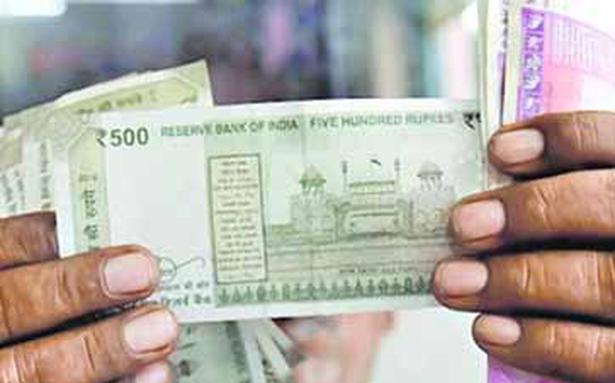“Rising commodity prices, a hawkish central bank and geopolitical concerns stalled global growth recovery.”
“Rising commodity prices, a hawkish central bank and geopolitical concerns stalled global growth recovery.”
The rupee fell 22 paise to close at 76.51 (prelim) against the US dollar on Tuesday, reflecting a strong US currency in the overseas market and significant outflows of foreign funds.
In the interbank foreign exchange market, the rupee opened at 76.34 against the US currency and was trading at 76.51, down 22 paise from the previous close.
During the session, the rupee saw daily highs of 76.25 and lows of 76.53 against the US currency.
On Monday, the rupee had finished 10 paise lower at 76.29 against the US dollar.
The rupee depreciated after foreign fund outflows from domestic equities, according to Dilip Parmar, research analyst at HDFC Securities.
“Global investors rushed towards safe-haven currencies that hinted at higher global bond yields.”
“Rising commodity prices, a hawkish central bank and geopolitical concerns stalled the global growth recovery,” Mr Parmar said.
A stronger dollar index, foreign fund outflows and higher crude oil prices could push USD/INR towards 76.70, while central bank dollar supply could limit upside potential, he said, adding that the pair is likely to hold support around the psychological 76 level .
The rupee has depreciated for the fourth straight day losing 38 paises against the US currency.
The Dollar Index, which measures the dollar’s strength against a basket of six currencies, traded 0.02% higher to 100.79.
Global oil benchmark Brent crude futures fell 1.18% to $111.82 a barrel.
On the domestic stock market front, the 30-stock Sensex finished 703.59 points, or 1.23%, lower at 56,463.15 points, while the broader NSE Nifty plunged 215.00 points, or 1.25%, to 16,958.65 points.
Foreign institutional investors were net sellers in the capital market on Monday, selling ₹6,387.45 crore of shares, according to stock market data.



